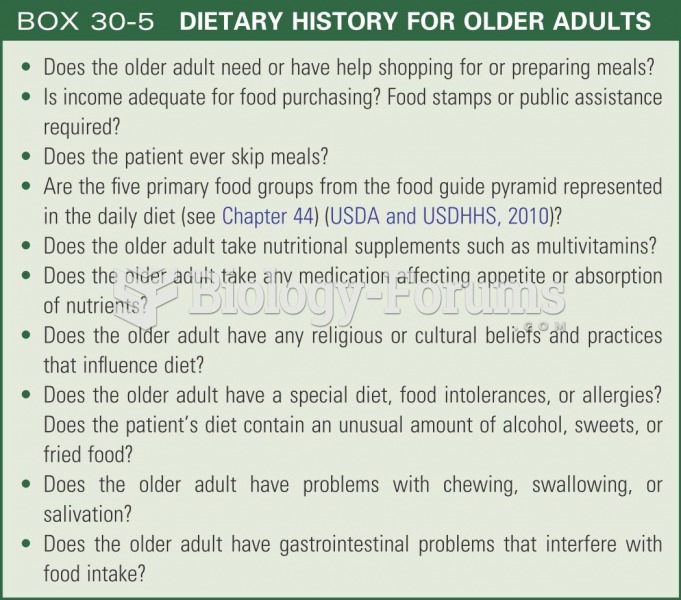Answer to Question 1
Correct Answer: 1,2,3
Rationale 1: Mild jaw spasms often herald the development of malignant hyperthermia.
Rationale 2: Darkened urine may signify rhabdomyolysis, which occurs with malignant hyperthermia.
Rationale 3: Tachycardia is a potential herald of malignant hyperthermia.
Rationale 4: Temperature elevation more than 2 hours after anesthesia is not a precursor of malignant hyperthermia.
Rationale 5: Respiratory rate may increase as anesthesia passes, but this is a rate still within normal ranges.
Global Rationale: Mild jaw spasms often herald the development of malignant hyperthermia. Darkened urine may signify rhabdomyolysis, which occurs with malignant hyperthermia. Tachycardia is a potential herald of malignant hyperthermia. Temperature elevation more than 2 hours after anesthesia is not a precursor of malignant hyperthermia. Respiratory rate may increase as anesthesia passes, but this is a rate still within normal ranges.
Answer to Question 2
Correct Answer: 4
Rationale 1: Verbalization of postoperative course of recovery is not a priority outcome goal related to administration of local anesthesia.
Rationale 2: Nutrition for wound healing is always important, but is not the priority goal in this situation.
Rationale 3: Return of gag reflex would be associated with general anesthesia or with local anesthesia of viscous lidocaine for gastrointestinal procedures. Return of gag reflex is not associated as an assessment for local anesthesia for a musculoskeletal injury.
Rationale 4: Local anesthesia results in paresthesia of varying lengths. The paresthesia places the client at risk for injury of the tissues with diminished sensation. Preventing this injury is a priority goal.
Global Rationale: Local anesthesia results in paresthesia of varying lengths. The paresthesia places the client at risk for injury of the tissues with diminished sensation. Preventing this injury is a priority goal. Verbalization of postoperative course of recovery is not a priority outcome goal related to administration of local anesthesia. Nutrition for wound healing is always important, but is not the priority goal in this situation. Return of gag reflex would be associated with general anesthesia or with local anesthesia of viscous lidocaine for gastrointestinal procedures. Return of gag reflex is not associated as an assessment for local anesthesia for a musculoskeletal injury.







